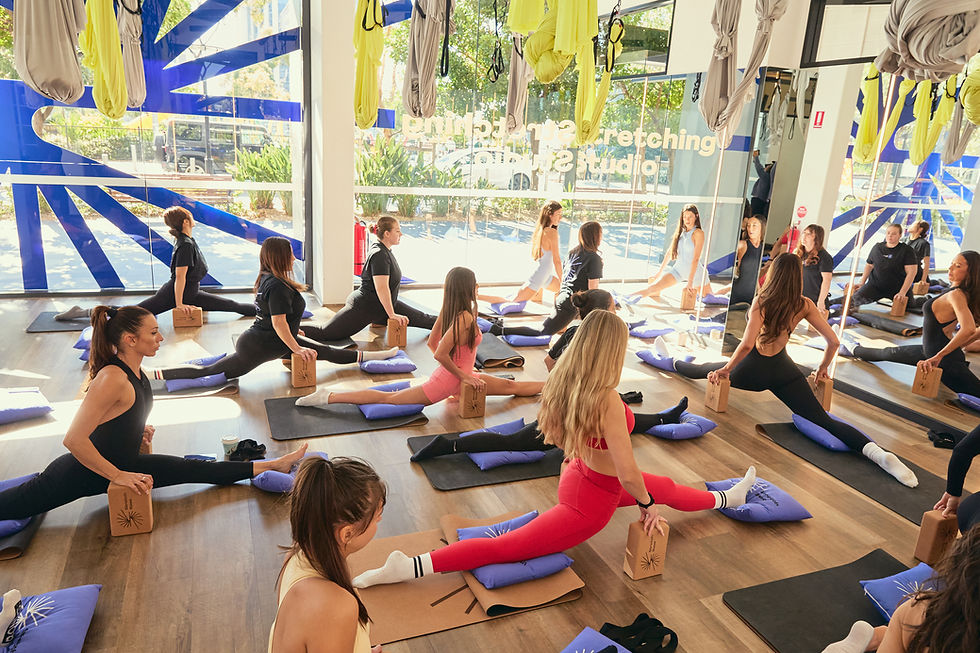The Connection Between Flexibility and Overall Wellness
- Senia C

- Apr 14
- 4 min read
Updated: May 5
Flexibility is often overlooked in our busy lives, yet it serves as a vital component of overall wellness. The ability to move freely without discomfort can greatly affect our daily activities and physical health. This blog post will explore the various stretching benefits, diving deep into how flexibility intertwines with our well-being, practical tips for improving flexibility, and its significance in healthcare.
The Stretching Benefits
When we think of wellness, we often consider diet, exercise, and mental health, but flexibility deserves equal attention. Enhanced flexibility improves our range of motion and can lead to decreased injury risk. For example, if you're an athlete, maintaining good flexibility can help prevent strains and sprains. A study by the American Council on Exercise found that individuals who perform stretching routines have a significantly lower chance of injury.
So, what are some key benefits of stretching?
Improved Posture: Regular stretching helps to alleviate tight muscles that can lead to poor posture. For instance, stretching your hip flexors and chest muscles can counteract the effects of sitting for long hours.
Enhanced Performance: Whether it's lifting weights or running, flexibility enhances performance. Studies have indicated that stretching increases blood flow, warming up the muscles, which can result in better exercise outcomes.
Stress Relief: Flexibility also plays a role in mental health. Engaging in stretching routines often incorporates mindful breathing, reducing stress and promoting relaxation. This aspect is particularly refreshing after a hectic day at work.

The Importance of Regular Stretching
Incorporating regular stretching into your daily routine can reap immense benefits. Aim for a daily stretching routine, even if it lasts for just 10 minutes. Here are some practical tips to help integrate stretching into your life:
Morning Routine: Begin your day with simple stretches. This can loosen up your muscles and prepare you for the day’s activities.
Desk Stretches: If you have a job that requires long hours at a desk, incorporate stretches every hour. Simple neck rolls or seated twists can make a difference.
Post-Workout Stretches: Always follow any workout regime with a stretching session. This aids recovery and enhances flexibility.
Statistics indicate that only 30% of adults stretch regularly. This number is surprisingly low when considering the benefits. Make it a goal to be part of the 30%!
How is Flexibility Important in Healthcare?
Flexibility and overall health are deeply interconnected. Health professionals frequently recommend stretching to promote rehabilitation after an injury. For example, physical therapists incorporate stretches into recovery plans for patients recovering from surgeries or injuries. Benefits include:
Increased Blood Circulation: Stretching enhances blood circulation, which is especially beneficial for recovering tissues and muscles.
Reduced Muscle Tension: Regular stretching significantly reduces muscle tension and soreness, which can impact mobility and daily life.
Pain Management: Many individuals, especially older adults, suffer from chronic pain. Stretching can alleviate discomfort in conditions such as arthritis, enhancing quality of life.
Physicians often advocate for flexibility programs, noting that they not only improve physical health but also support mental health and emotional well-being.

Practical Tips for Improving Flexibility
Improving your flexibility doesn't require extensive training regimens. Here are some actionable recommendations:
Dynamic Stretching: Begin your stretching routine with dynamic stretches. These involve active movements that help warm up the muscles. Think arm circles or leg swings.
Static Stretching: After a workout or during a cool-down phase, incorporate static stretches, where you hold the stretch for 20-30 seconds. This helps lengthen the muscles.
Yoga and Pilates: These practices incorporate flexibility training into their routines. They can improve core strength, posture, and flexibility simultaneously.
Stay Hydrated: Staying hydrated impacts muscle elasticity. Ensure adequate water intake to help maintain flexibility.
Listen to Your Body: Always listen to your body's signals. Stretch to the point of mild discomfort, not pain. Progressively increase intensity over time.
A Holistic Approach to Wellness
To incorporate flexibility effectively into your daily life, it’s crucial to adopt a holistic approach to wellness. This means nurturing your body, mind, and emotional health. Here are some strategies you can employ:
Mindfulness Practices: Alongside stretching, consider embracing mindfulness techniques. This could include meditation or just taking deep breaths while stretching to promote relaxation.
Balanced Diet: Nutrition plays a vital role in your overall health and flexibility. Ensure you are consuming a balanced diet rich in vitamins and minerals that support muscle recovery and function.
Quality Sleep: Never underestimate the power of sleep. Adequate rest significantly impacts muscle recovery and overall flexibility.
Flexibility isn’t merely a physical attribute; it contributes to your overall wellness and quality of life. By prioritising stretching routines, you're investing in your long-term health.
In summary, the connection between flexibility and wellness can’t be understated. Begin incorporating these strategies into your routine and start noticing the benefits today. For more comprehensive routines, consider looking into our classes that emphasise stretching and flexibility. Your body will thank you!





Comments